Beyond Estimation
Going beyond estimation and cost control has always been a priority for us. We have built a suite of beyond estimation processes that we can use for your project. We have market outlook forecasting tools to establish appropriate escalation contingencies, benchmarking, and cost modeling tools to set appropriate budgets, options and program analysis tools to optimize your project, and procurement strategies to set your project up for success.
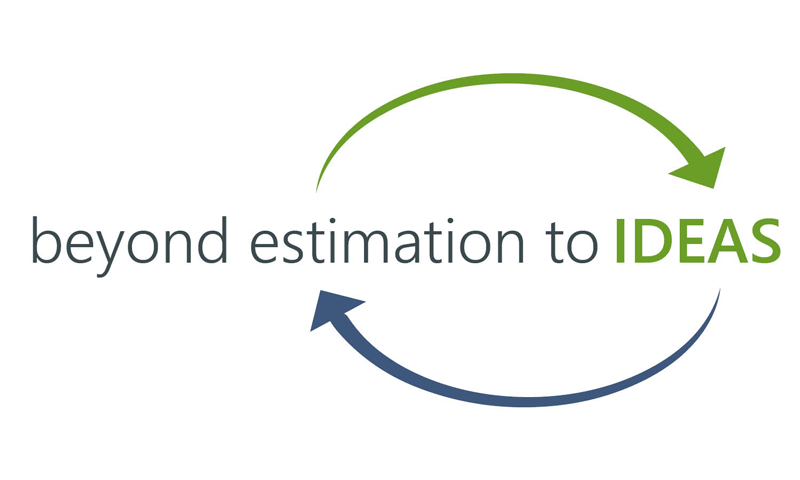
Continuous Estimating
Continuous Estimating provides a monthly update and continuous monitoring as the design develops between major design milestones.
The team establishes a reconciled baseline at each design milestone. Corrective action is incorporated to eliminate major redesign efforts so that projects stay on schedule and on budget.
Cost Tracking and BIM expedites work within the continuous estimating, itemized tracking, and Building Information Models of the integrated design process.
We utilize BIM as a quality control tool that can provide our team with an additional check for our take-offs that would not be possible with 2D drawings. Real-time feedback provides estimate updates on design scope work items.
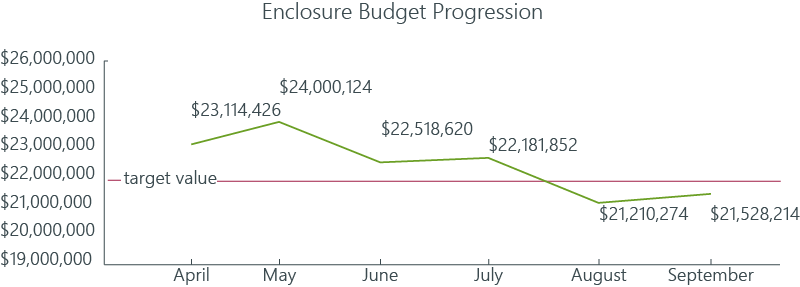
Cost Models
Cost Models evaluate siting, massing, program blocking and stacking, architectural concepts, structural/mechanical/electrical/equipment narratives in elemental systems estimate format.
Ideal models are created from source materials and data collection. These models are compared to budgets and refined through iterations to create a preferred concept. The final model provides a basis of design used in subsequent design stages.
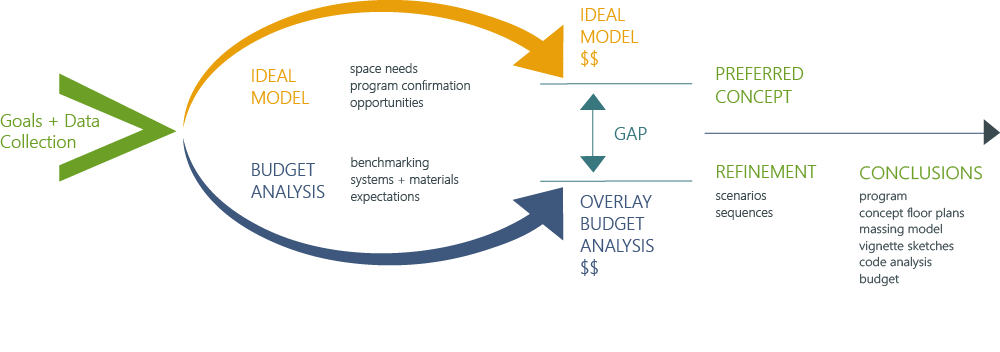
Parallel Estimating
Parallel Estimating compares and analyzes cost opinions from the contractor market with our bid data.
Two firms prepare independent estimates from the same documents at each design milestone. We reformat our estimate for ease of comparison and analysis. A summary of potential differences and opportunities forms the agenda for value optimization and reconciliation between the estimates and budgets.
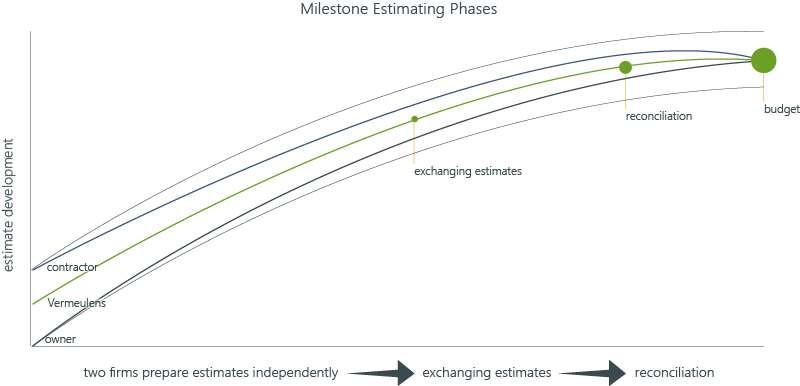
Program Estimating
Program Estimating provides systems weighted square foot cost data which allows us to generate real time program sizing and prioritization.
Our unique approach attributes all costs required for an individual space, such as head end equipment and distribution, to that space. Tracking program changes and related cost impacts saves a great deal of design time and effort, and provides an important tool for understanding the cost drivers of your project.
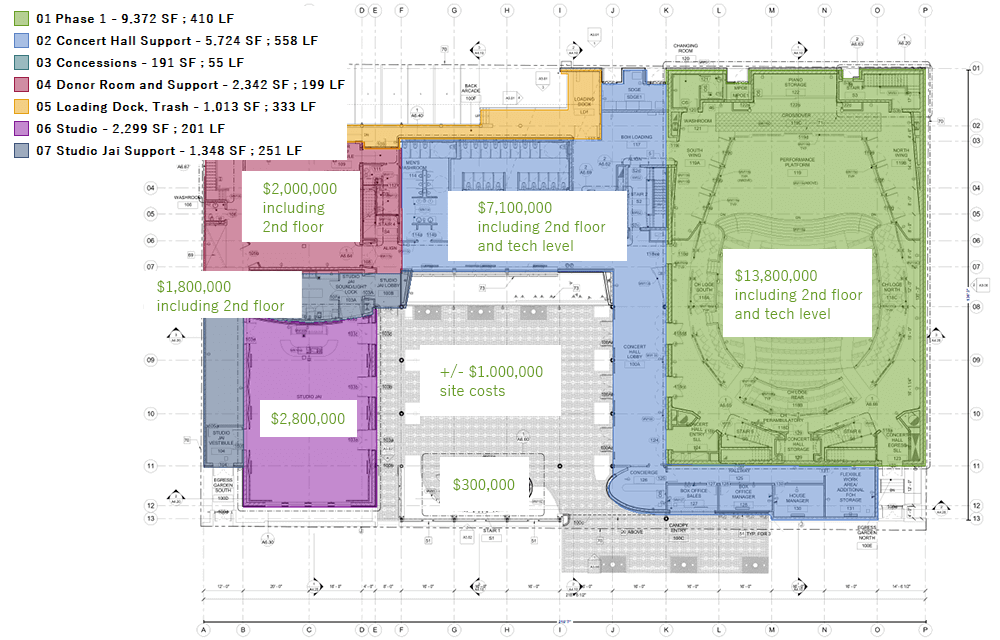
Target Value Models
Target Value Models provide cost control for individual design disciplines.
Typical design parameters such as structural steel tonnages, exterior enclosure ratios, partition densities, air handler volumes etc., provide validation for target values that can be checked continuously as design develops. This approach leads to early warning feedback and schedule control, avoiding redesign.
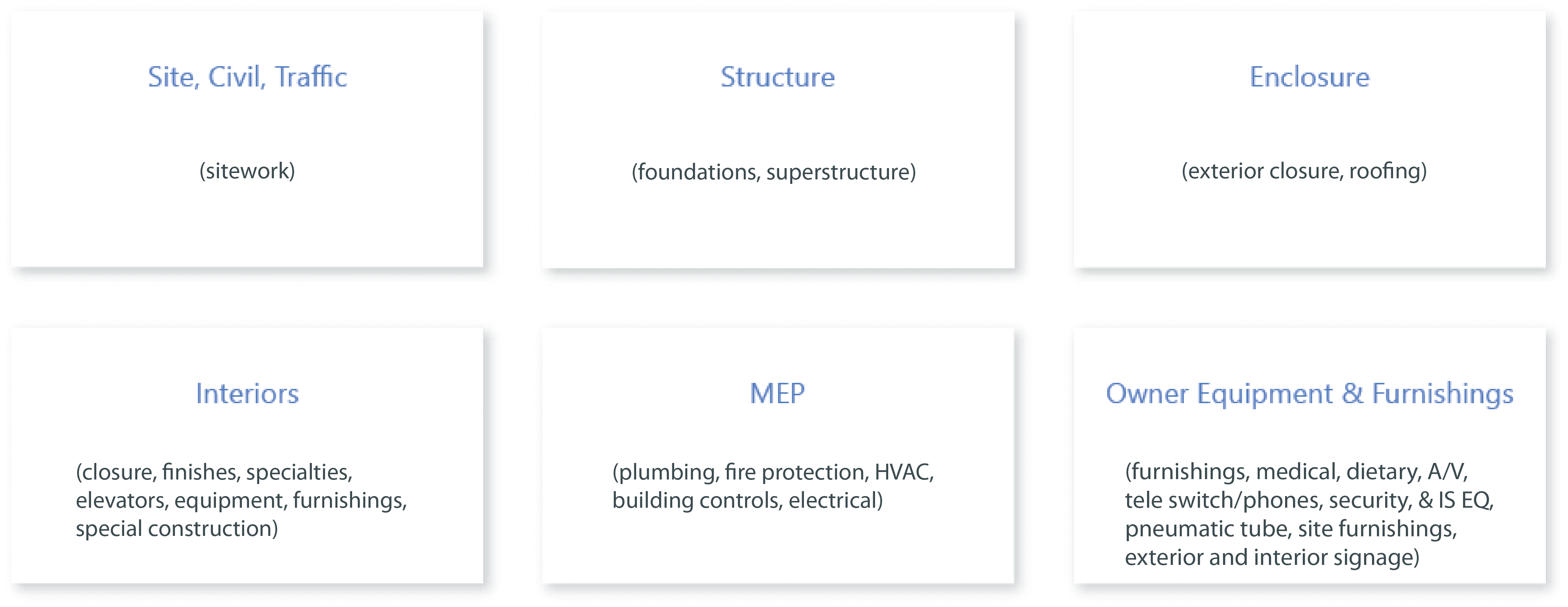
Value Optimization
Decision makers, from the owner, design, construction, and estimating team, attend this workshop with the information ready to discuss ideas and make informed decisions. We provide a complete record of all cost reconciliation, savings, and alternatives for use in subsequent design stages.
Value Optimization generates and tracks cost control alternatives and strategies in a workshop approach.
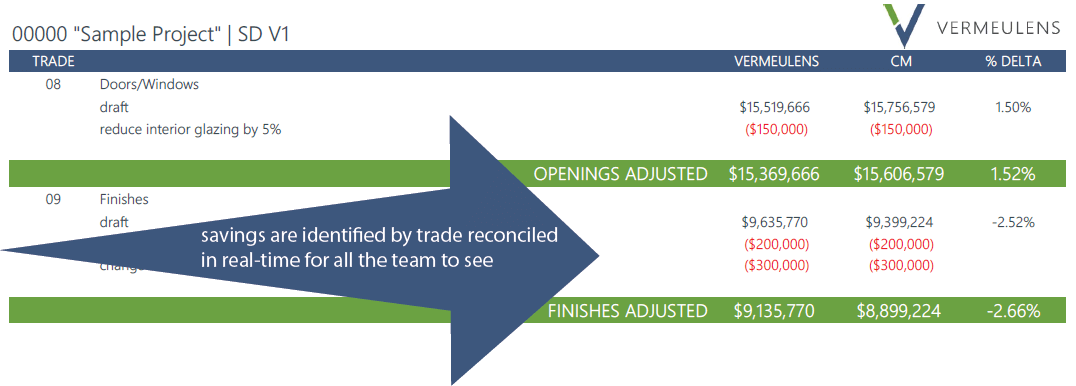
Program Analysis
Program Analysis is based on area graphics and program data from 3,300 projects.
Program data on all of our projects allows us to analyze the program mix and appropriate net to gross ratios.
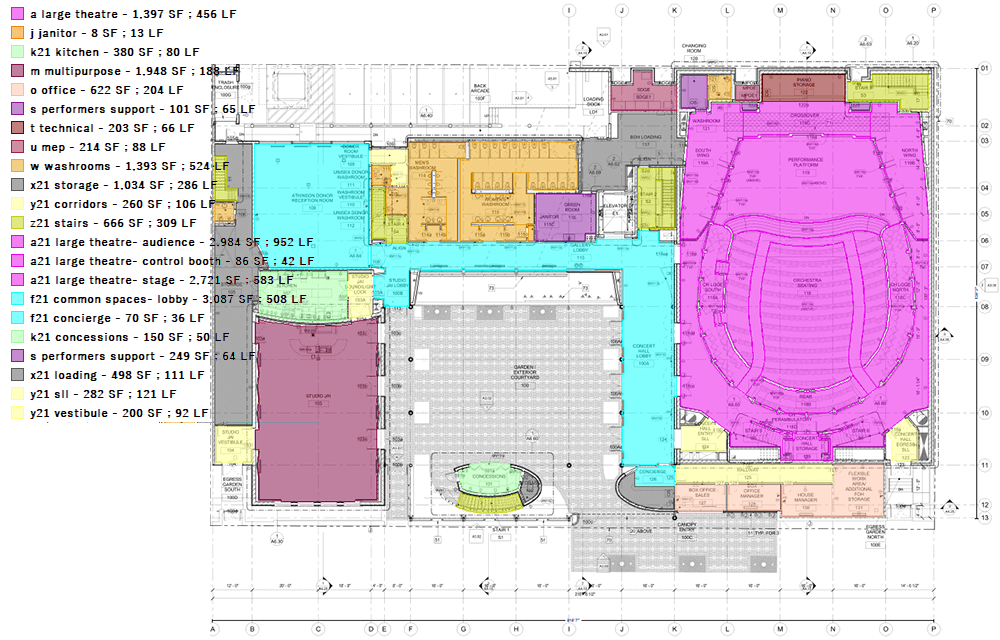
Construction Scheduling
- Vermeulens provides clients with a Critical Path Method (CPM) schedule showing the overall project duration, with specific activities depending on the design stage and client needs
- specific activity durations and critical path items can be broken out to help clients manage risk
- in conjunction with our estimates, monetary values can be added to schedule activities to create a Cash Loaded Schedule that shows anticipated cash flow needs for the project
- if requested, Vermeulens can also review schedules created by a Construction Manager or General Contractor, with specific focus on best practices, proper logic, and conformance with actual work put in place
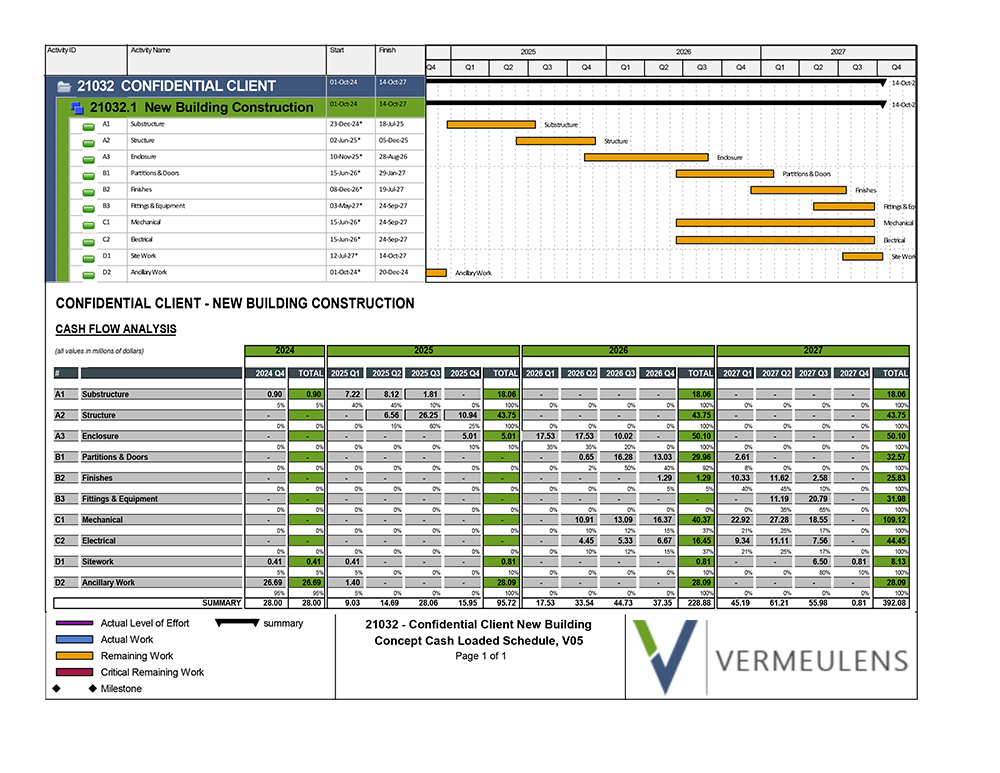
Procurement Strategies
Procurement Strategies control schedule and cost negotiations.
Developing a procurement strategy requires an assessment of design input, client control, risk, flexibility, schedule security, market conditions, timing, and complexity. The procurement approach affects service, quality, cost, and schedule.
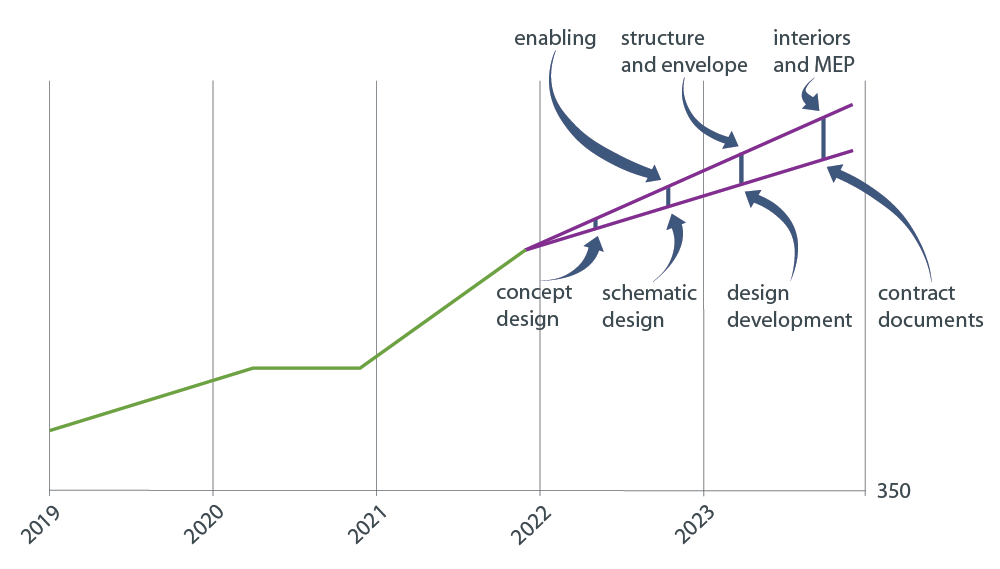
Green at No Cost
At its heart, Green at No Cost lays out the practical planning and design strategies that provide substantial cost savings for city planners, developers, architects, designers, and policymakers based on measured cost saving.
From lower infrastructure cost to faster transportation systems that utilize 21st-century technology, we can improve our daily lives. Green at No Cost outlines how we can improve land use by 15%, save 60% on energy consumption in buildings, reduce transportation costs by 60% while increasing choice, access, mobility, and space. The Value Process creates a design framework and cost model, The Eco-City, that multiplies the ecological benefits of green infrastructure by the economic benefit of diverse activity.

Market Outlook
Vermeulens Market Outlook Quarterly charts leading indicators and provides forecasts for price trends in the Institutional, commercial and industrial construction sector.
Key indicators include monetary policy targets, Vermeulens Index trends, architectural billings, construction dollar volume, financial and real estate asset prices, construction and overall employment growth. Regional and local trends are charted with Vermeulens Labor Growth Rate “weather” map. To sign up for our Quarterly click here.
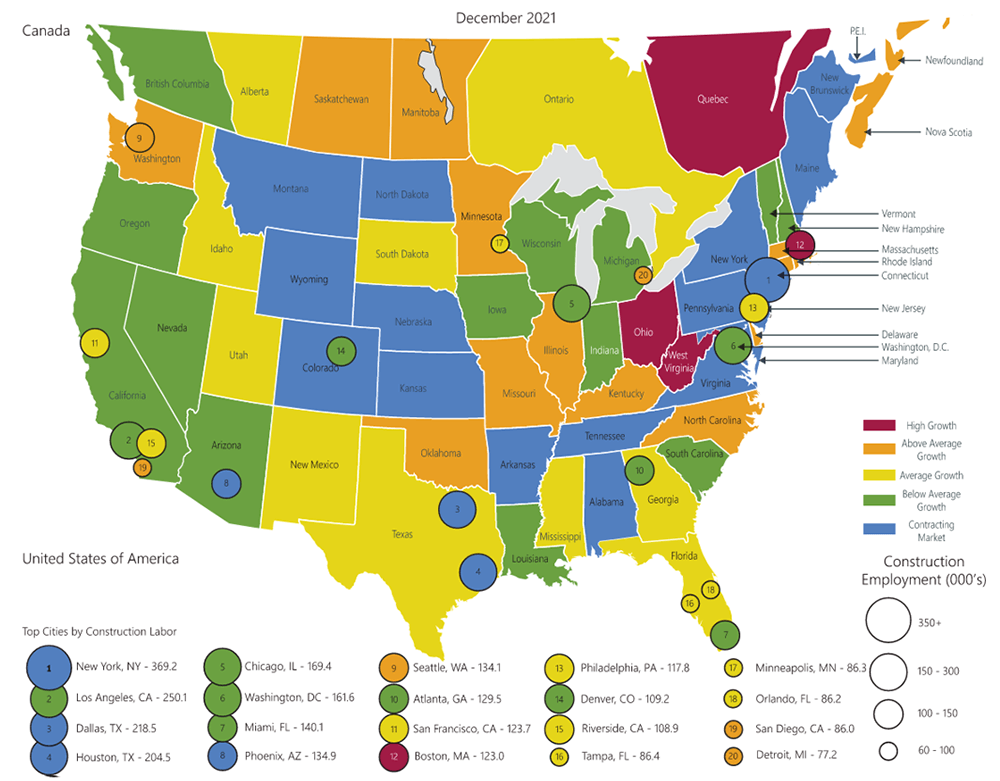
Options Analysis
Options Analysis documents design parameters and compares itemized costs to facilitate design decisions.
Drawings, narratives, itemized scope, and discussions are compiled and documented with relevant cost data in order to fully understand all the attributes and ramifications of various options.
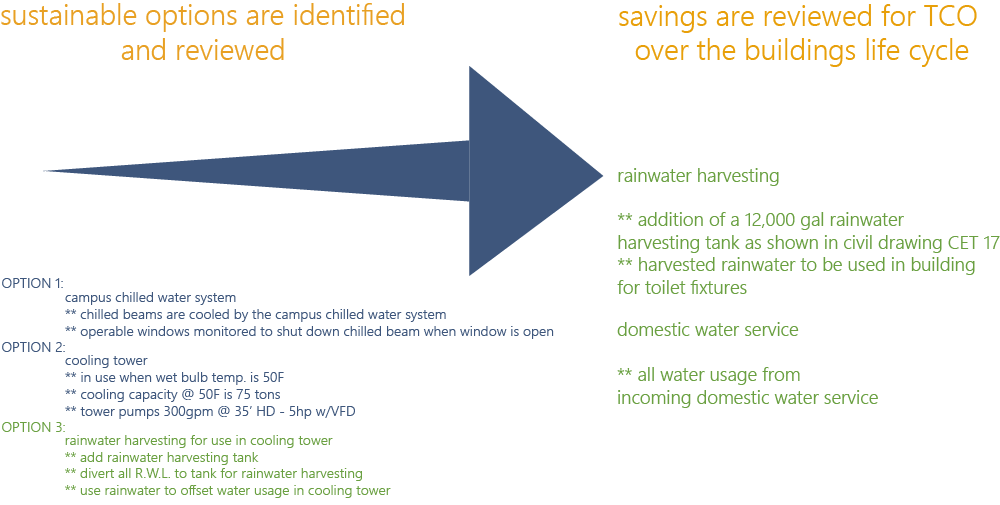
Benchmarking
Benchmarking provides a systems comparison of comparable projects indexed to your time and place.
Vermeulens database includes 3,300 projects. We have instant access to local market conditions, trade prices, escalation, building type, construction documents, line item breakdowns, product information, and bid analysis that can be sourced to compare with your project.
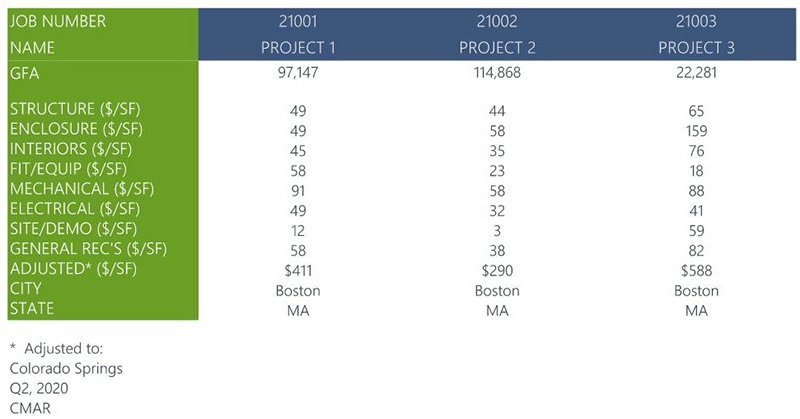
Risk Analysis
Risk Analysis sets contingency levels and avoids the redesign treadmill.
Once line item estimates are understood and reconciled, an assessment of future development and conditions inform appropriate contingency levels for both anticipated and unanticipated changes that are likely to occur.
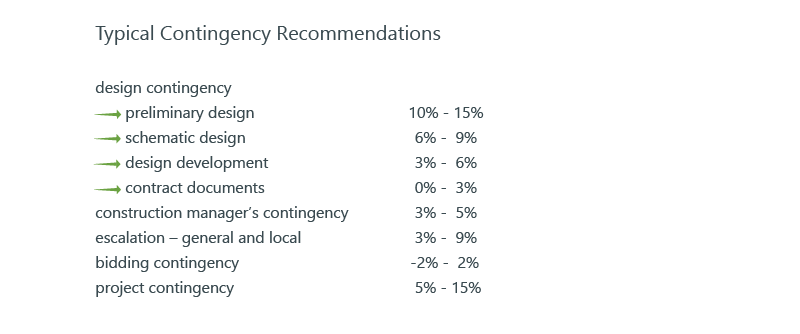
Vermeulens Index
Vermeulens Index charts construction price trends for the institutional, commercial, and industrial.
Unlike other indices, Vermeulens Index is based on actual bid prices for over 1,200 projects since 1986. Price movements can vary significantly from long term trends. Vermeulens Index charts these variances in order to provide comparative analysis on where we are in the business cycle. This data, along with analysis of other leading indicators, has allowed us to successfully forecast price movements through recent expansions and contractions in our industry.
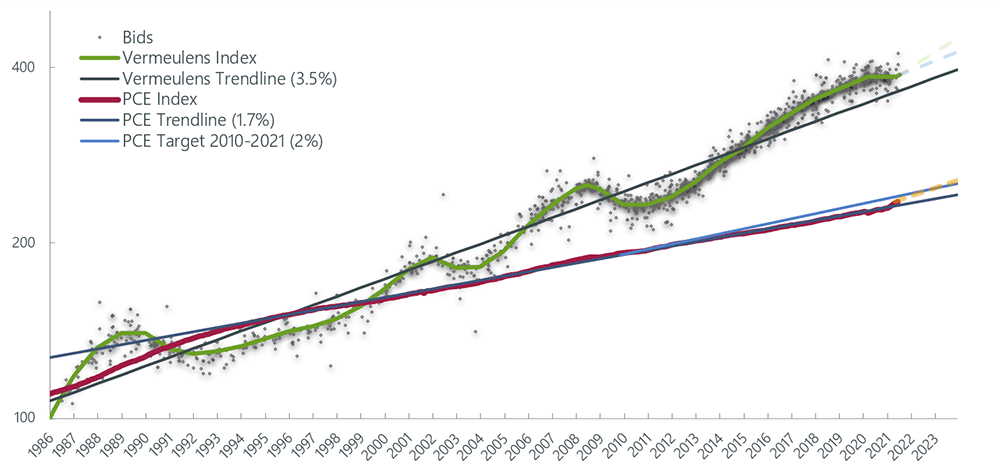
Market Outlook Signup Form
Beyond Estimation
Going beyond estimation and cost control has always been a priority for us. We have built a suite of beyond estimation processes that we can use for your project. We have market outlook forecasting tools to establish appropriate escalation contingencies, benchmarking, and cost modeling tools to set appropriate budgets, options and program analysis tools to optimize your project, and procurement strategies to set your project up for success.


continuous estimating
Continuous Estimating provides a monthly update and continuous monitoring as the design develops between major design milestones.

cost models
Cost Models evaluate siting, massing, program blocking and stacking, architectural concepts, structural/mechanical/electrical/equipment narratives in elemental systems estimate format.
Ideal models are created from source materials and data collection. These models are compared to budgets and refined through iterations to create a preferred concept. The final model provides a basis of design used in subsequent design stages.

parallel estimating
Parallel Estimating compares and analyzes cost opinions from the contractor market with our bid data.
Two firms prepare independent estimates from the same documents at each design milestone. We reformat our estimate for ease of comparison and analysis. A summary of potential differences and opportunities forms the agenda for Value Optimization and Reconciliation between the estimates and budgeted.

program estimating
Program Estimating provides systems weighted square foot cost data which allows us to generate real time program sizing and prioritization. bid data.
Our unique approach attributes all costs required for an individual space, such as head end equipment and distribution, to that space. Tracking program changes and related cost impacts saves a great deal of design time and effort, and provides an important tool for understanding the cost drivers of your project.

target value models
Target Value Models provide cost control for individual design disciplines.
Typical design parameters such as structural steel tonnages, exterior enclosure ratios, partition densities, air handler volumes etc., provide validation for target values that can checked continuously as design develops. This approach leads to early warning feedback and schedule control, avoiding redesign.

value optimization
Value Optimization generates and tracks cost control alternatives and strategies in a workshop approach.
Decision makers from the Owner, Design, Construction, and estimating team attend this workshop with the information ready to discuss ideas and make informed decisions. We provide a complete record of all cost reconciliation, savings, and alternatives for use in subsequent design stages.

program analysis
Program Analysis is based on area graphics and program data from 3,300 projects.
Program data on all of our projects allows us to analyze the program mix and appropriate net to gross ratios.

construction scheduling
Scheduling Services
- Vermeulens provides clients with a Critical Path Method (CPM) schedule showing the overall project duration, with specific activities depending on the design stage and client needs
- specific activity durations and critical path items can be broken out to help clients manage risk
- in conjunction with our estimates, monetary values can be added to schedule activities to create a Cash Loaded Schedule that shows anticipated cash flow needs for the project
- if requested, Vermeulens can also review schedules created by a Construction Manager or General contractor, with specific focus on best practices, proper logic, and conformance with actual work put in place

procurement strategies
Procurement Strategies control schedule and cost negotiations.

green at no cost
At its heart, Green at No Cost lays out the practical planning and design strategies that provide substantial cost savings for city planners, developers, architects, designers, and policymakers based on measured cost saving


market outlook
Vermeulens Market Outlook Quarterly charts leading indicators and provides forecasts for price trends in the Institutional – Commercial – Industrial construction sector.


options analysis
Options Analysis documents design parameters and compares itemized costs to facilitate design decisions.


benchmarking
Benchmarking provides a systems comparison of comparable projects indexed to your time and place.

risk analysis
Risk Analysis sets contingency levels and avoids the redesign treadmill. place.

vermeulens index
Vermeulens Index charts construction price trends for the institutional, commercial, and industrial.







 benchmarking
benchmarking construction scheduling
construction scheduling continuous estimating
continuous estimating cost models
cost models green at no cost
green at no cost market outlook
market outlook options analysis
options analysis parallel estimating
parallel estimating procurement strategies
procurement strategies program analysis
program analysis program estimating
program estimating risk analysis
risk analysis target value models
target value models value optimization
value optimization vermeulens index
vermeulens index


